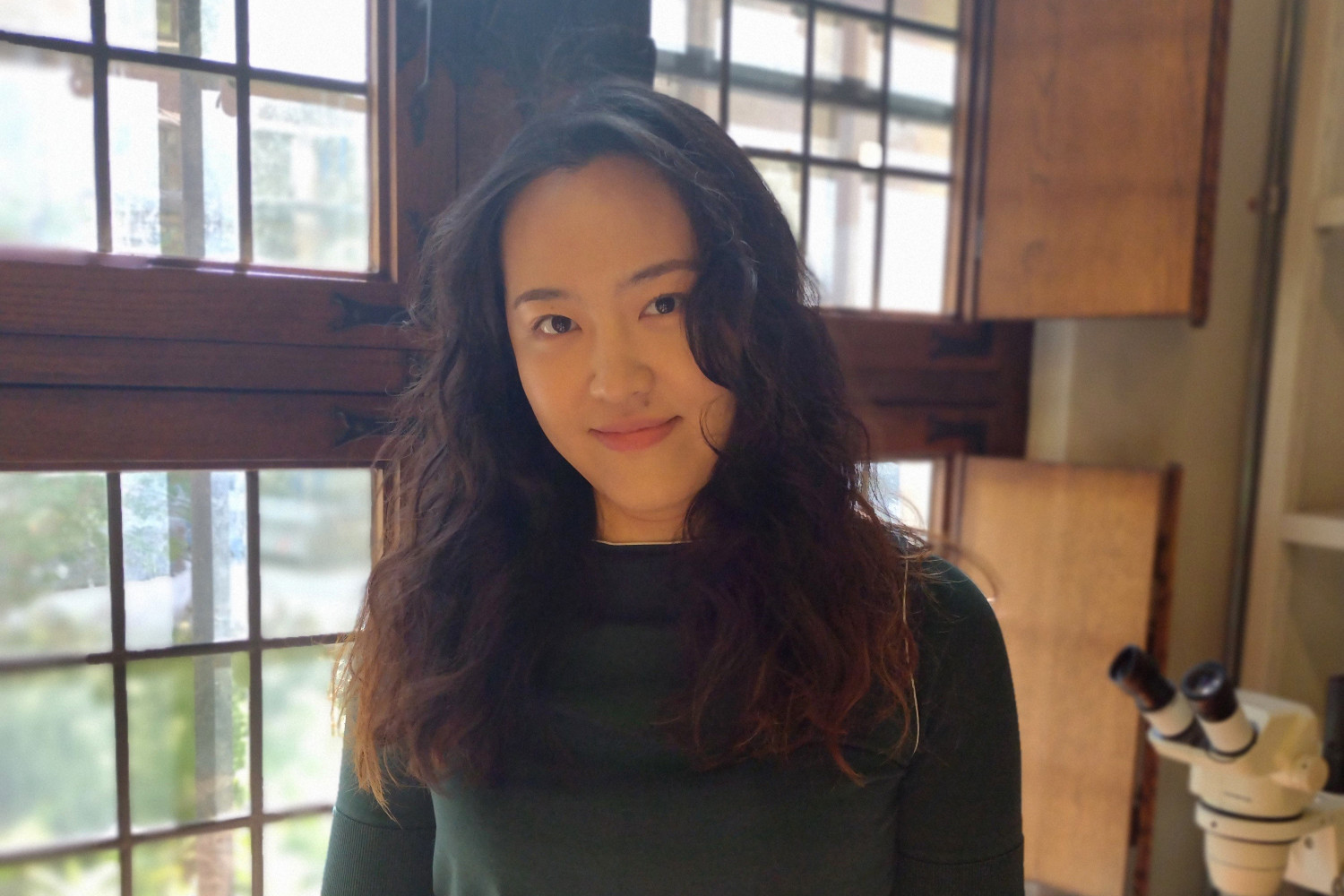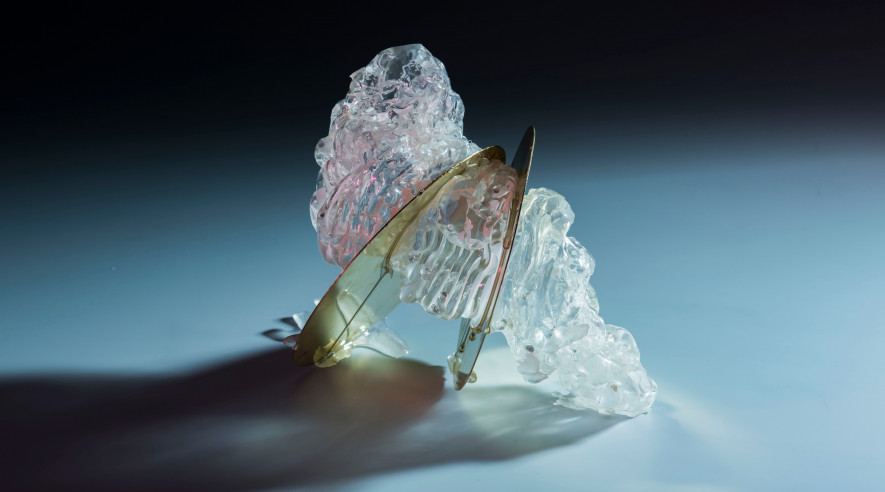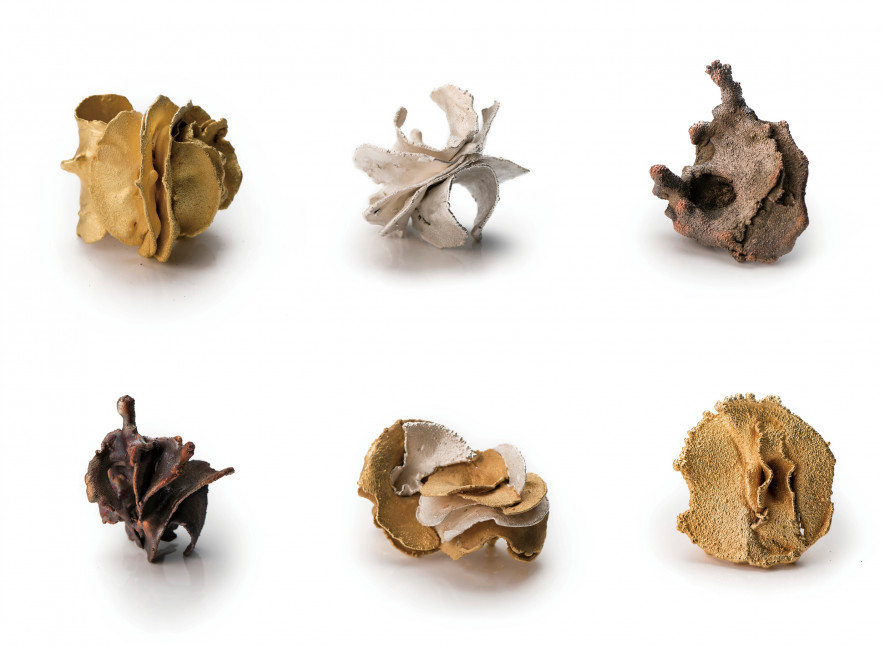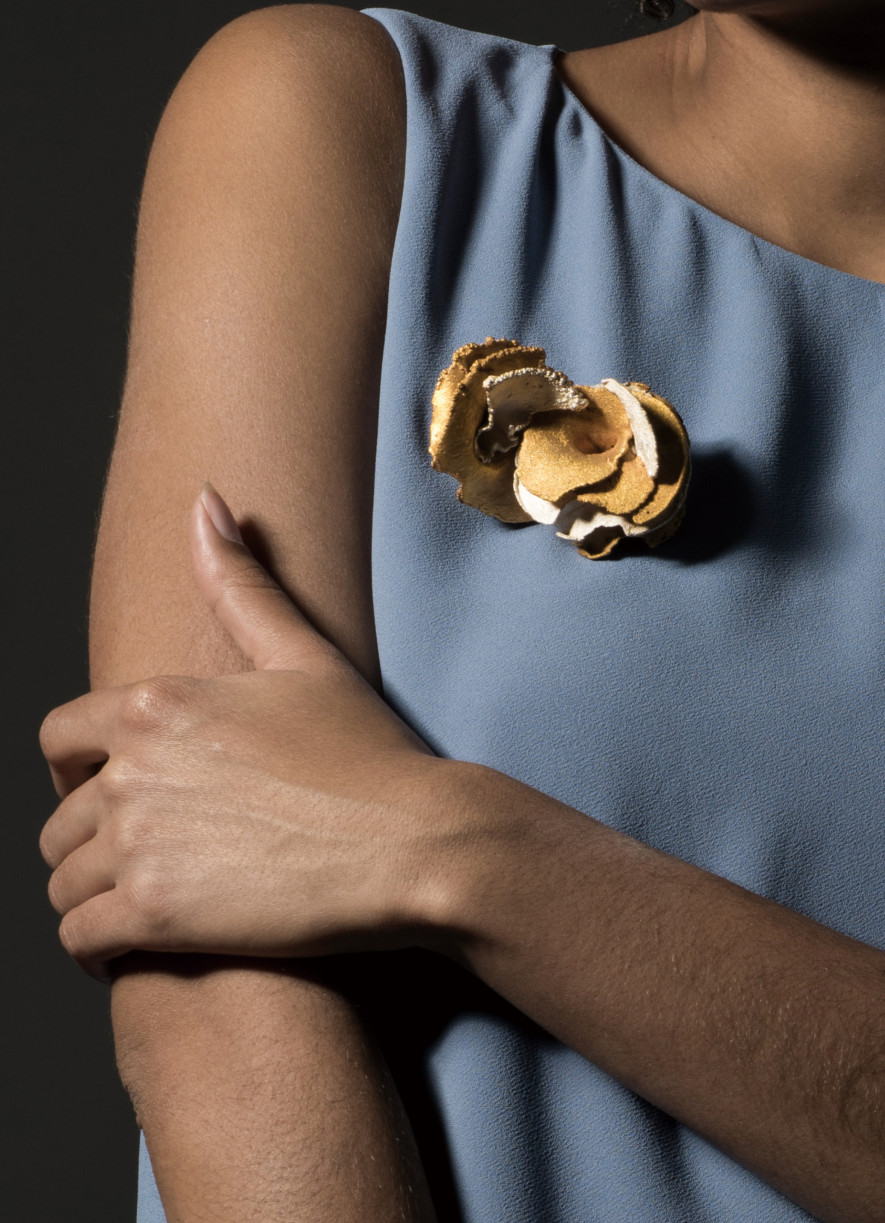Interview with Lingjie Wang
Lingjie Wang lives and works in Shanghai, China. She studied Industrial Design at Hunan University, Changsha, Hunan, China, and then worked for the Pan Asia Technical Automotive Center as an automotive interior designer. A jewellery course at Pforzheim University, School of Design, introduced her to a whole new world. After graduating as a jewellery designer, she became a full-time jewellery artist and designer and she is now following a two-month residency at DIVA.
In her jewellery she investigates the relationship between material, form and concept. Every culture has a different preference when it comes to gemstones. In the East people attach much more value to a gemstone like jade, while in the West they are more likely to choose diamonds. In her work, she explores how materials are defined and processed and also the cultural implications of this. In April 2022 Tom Iriks and Lingjie Wang met up on Zoom for this interview.
Can you describe yourself?
I see myself as a creator. I have tried different roles. I can be a designer, but instead of designing objects to meet the demands of the consumer market, I realised I prefer to give my designs more freedom. I tend to grow my work rather than design my work. I am fascinated by unexpected changes which result in my losing control of my work. Consequently, it is not easy to duplicate it. And I like that. Expect the unexpected is my credo, I think.
Can you describe the way you work?
My work is often the result of curiosity. I am interested in so many different things: everyday items, what is happening around me, a sudden emotion – they can all be inspirational. Transience or impermanence is a characteristic of my work. My jewellery is not restricted to a single theme or field. However, a constant in my work is providing a personal perspective and showing different forms of overlooked details in daily life, which make people more sensitive to the warmth of life.
Can you give me an example of your way of working based on one of the pieces you have made?
One of the works in my collection is called ‘Impulse’. It came to life by accident! It amplifies an emotional moment. I happened upon a way of making use of a balloon. An impulsive act is like a process of inflating and deflating balloons. It is a sudden sensation, an inner movement or transformation. When you act on impulse, you don’t give what you do much thought. Although the impulse itself passes, the things we have done on impulse leave behind something physical or psychological. The process of making these pieces corresponds to the process of an impulse. At a certain point, I poured some resin over a balloon and then once the impulse had passed, I removed the air. The texture that was left on the resin was so fascinating that I used it to create a series of objects.
What was your main motivation for applying for a residency at DIVA?
I like to work in an open and international way. I have never been to Antwerp, so this is a very exciting opportunity for me. I believe new people and a new environment will stimulate and inspire me. It is also a way of promoting cultural exchange and a chance for me to show my work to a wider audience.
What do you aim to research or improve during the residency?
During my residency I want to explore the cultural implications of materials. Different cultures are drawn to different gemstones. Eastern people tend to prefer jade, while Westerners are more likely to choose diamonds. I am curious to find out what happens when diamond meets jade. Jade is a general representation of eastern culture, but it can also be other materials, such as corals, pearls, bamboos, ceramics, etc. How people define or evaluate a particular material can partly be explained by the way it is processed. Take a look at traditional settings found in solitaire and band rings and you see that diamonds always dominate. I want to develop different settings and redefine the relationship between materials and the way they are traditionally processed.
Why do you want to use a stone like jade?
Because it represents Chinese and Eastern culture in general. It’s a very tender and warm kind of material. The colour is very soft too. This material contains both good life blessings and symbolizes the pursuit of humility and courtesy in Chinese traditional culture. Jade also has cultural and religious implications. Interestingly, the Chinese once regarded jade as ‘food for the Gods’. Nowadays jade is usually processed in a round or figurative form. This is quite different from a diamond or other cutting technologies in Western cultures.
What is the difference exactly?
In terms of the value of the stone, it is similar to diamonds. When you have a big rough stone it is hard to say how much jade it contains or how many valuable stones are concealed inside it. So trading jade before it is cut is also known as ‘stone gambling’. Once it has been cut open and the inside of the stone is revealed, you can start to process jade. This process adds value.
Are there any guidelines for processing jade?
This is interesting. Jade is very rarely cut like a diamond. It is usually worked into a round shape. You also see a lot of sculptured jade with traditional motifs, such as Buddha. They all symbolize happiness, good luck and good fortune in Chinese culture. The National Palace Museum in Taipei, has a famous work made of jade sculptured according to its colours and shaped into a cabbage with insects on the leaf. The work represents the purity and innocence of a woman, which in the Chinese language are homophones. So jade can take on a whole variety of forms and this is quite different from diamond.
Can you talk about your personal journey - in jewellery - in art? Which experiences were important?
I never contemplated a creative career. I trained as an industrial designer at Hunan University, Changsha, Hunan Province in China. I worked as an automobile components designer in Shanghai and planned to go Germany to learn more about transportation design. There are a lot of famous automobile companies in Germany, especially in the southern German states of Baden-Württemberg and Bavaria. Pforzheim University is renowned for its transportation design. A colleague of mine had also recommended the jewellery department and this planted a seed. I enrolled for a preliminary course in the jewellery department at the School of Design at Pforzheim University. It was there that I discovered a different way of designing that suited me better. This, combined with a strong desire to express myself, led me to pursue a career as a jewelry artist and designer.
When was this?
I arrived in Germany in 2015. After a one-year preliminary course, I enrolled for a full four-year study programme, including one extra semester abroad at Central Saint Martins in London.
What did you learn at the Hochschule Pforzheim? What will you always remember?
I went to Pforzheim as a designer interested in problem-solving. Studying at Hochschule Pforzheim helped me find problems and learn from those problems. Now there is a better balance between solving practical or technical problems, aesthetics, self-expression and subjects that matter to me. And most importantly, Hochschule Pforzheim spurred me on to become a more energetic and loving person.
Designing is not about problem solving, but about creativity?
Yes, and it takes creativity to find problems.
Do you have a personal routine or ritual while you are working?
I like to start my day with some music and a cup of coffee or tea. When I feel relaxed, I can enjoy the whole working process. I also have a habit of recording my ideas on my phone. I use it as a library of ideas. Before starting a project, I often listen to these recordings.
A contemporary version of a written diary. Do you write or draw while working?
I don’t draw very often but I have to admit that drawing really helps me document and sort out ideas. Sometimes it also helps me develop new ideas. My hands don’t always listen to my brain and feel like two different systems.
Most of your designs were made on a computer? Or do you use other tools?
I like to experiment with materials. I start with a rough idea and then try and make it with my hands. I need to touch and feel the material when I am working.
Which part of being an artist is your favourite and which part do you not like?
I very much enjoy traveling around the world and seeing different countries, meeting people and experiencing different cultures. Another very interesting part of being an artist is that I get the chance to use my antennae creatively. I receive a lot of information and this flow of information makes me curious. On the other hand, being an artist was not what I originally set out to become in life and it was certainly not what my family expected of me. The decision I made to switch profession and go against the expectations of others was not an easy one. Overcoming this difficulty made me more determined and gave me the courage to be myself.
What inspires you to create? Where do you get your ideas from?
My ideas come from life. New ideas come up when I am in the shower or on the road or in conversation with others. I am very receptive and I find different opinions and perspectives enriching.
You made a work called ‘Strange familiarity’. What was the starting point for this work?
I wanted to explore a hidden and strange aspect of something familiar. Our belly button is familiar and strange at the same time, so I took that as my starting point. The works were created by chance. I happened to be working from home and came up with the idea of making a mould of my room-mate’s navel. I warmed wax in the oven in my kitchen because I was working at home and had no access to a professional wax machine. However, the restricted working conditions led me to explore different possibilities using wax moulding. By controlling the contact between the wax and the mould, I created a unique belly button! I even discovered some unexpected attributes of wax, which made the belly button shape take on a mushroom-like appearance.
What is strange and what is familiar about this process?
The navel is something we are very familiar with, but it’s hidden behind our clothes. It is also what connects us to our mother when we are born. However, we are not very familiar with other people’s belly buttons, even the belly buttons of those we are very close to. I cannot draw my mother's belly button when I think of my mother. That makes the belly button familiar and strange at the same time.
Which part of DIVA’s collection are you most excited to discover during your residency?
I’m looking forward to experiencing the museum’s historical collections and also the city. I'm interested in discovering connections between antique and modern life.
What would you like to achieve during your residency?
I would like to meet new people and build connections. To exchange ideas and experience life in Antwerp and develop new work.
What is your dream in terms of your art?
I hope my work touches people like music. I think music is very direct and sometimes when you hear a melody or a song, it just touches you. I hope my work has the same effect as music.





